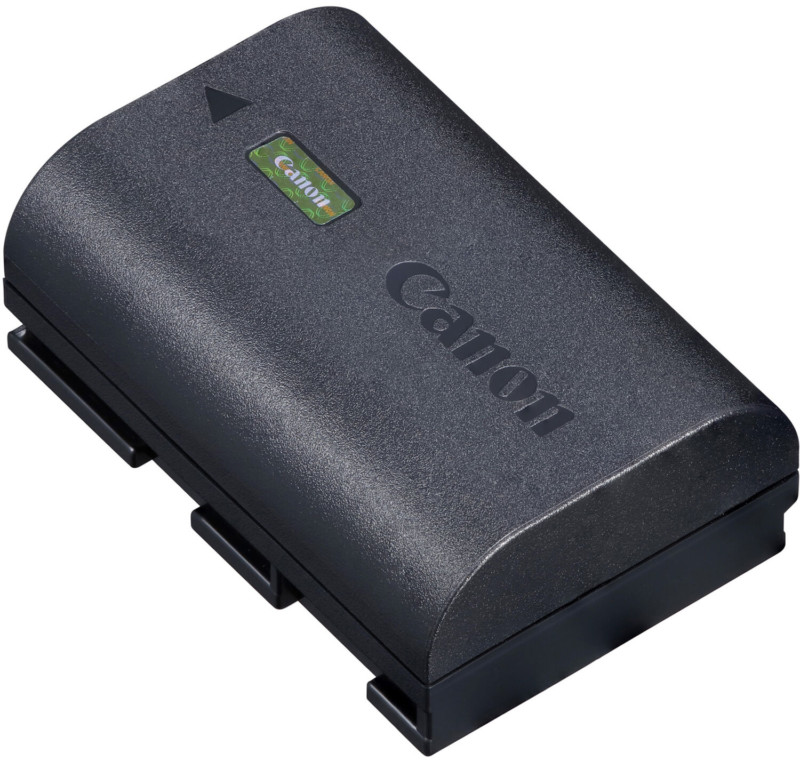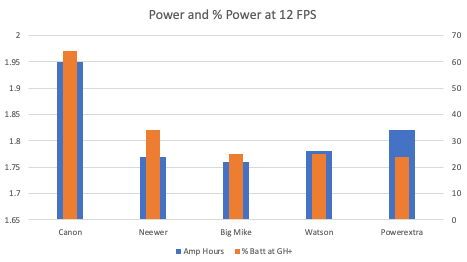
There is a lot of misinformation involving the different types of Canon batteries and third-party solutions, so Camnostic.com spent six months testing the options to figure out which is best for use in Canon’s EOS R5 camera.
The EOS R5 has incredible capabilities, but some of those modes require significant power to operate correctly. According to Camnostic, Canon addressed the additional juice certain features needed by creating two different ways the camera could address the situation: Firstly, if it was given a battery that couldn’t keep up, the camera can drop into a lesser-wattage mode, but secondly, Canon also created the LP-e6NH that was a capable of higher wattage for a longer period of time.
“They also finally allow for USB charging and running the camera on USB, provided you are using wall power or a battery with enough wattage,” Camnostic writes. “Some of these learnings – like the fact that USB batteries of 45 watts or greater will power the camera in addition to charging batteries when the camera is off – are undocumented in Canon materials.”
Many believe, incorrectly, that the LP-e6NH has more usable power than the LP-e6N that came before it, but this is not the case. In Camnostic’s real-world testing they found that using dozens of individual batteries over that period proved that the newer models don’t push more milliamp hours of power to the camera but they do keep their wattage up over a certain threshold through the use of about two-thirds of the battery’s charge, maximizing the ability of the battery to power the most resource-heavy modes of the camera. For example, the highest framerate while using the mechanical shutter — 12 frames per second — is particularly power-hungry.

The tests performed by Camnostic center around what battery option is best-suited to those power-hungry modes (like the maximum FPS with a mechanical shutter), so if consistency there isn’t a concern to you, many of their findings won’t hurt your expectations with batteries and the camera.
Camnostic tested multiple battery situations (including external batteries attached to a “dummy battery shaped like an L-e6) to chart real world expectations and even compared these results to third-party brands Neewer, Big Mike, Watson, and Powerextra.
While there are multiple tests and findings in the full report, one area that is worth looking at on its own is a test that Camnostic did to see how the Canon-branded batteries performed against those third-party options, all of whom claim better performance than first-party batteries.
“All NH batteries overstate their actual performance – even Canon’s,” Camnostic found. “The third-party versions all claim to have more juice than the Canon, and every one of them actually has less power. Here is perhaps the most important chart on the topic: the real-world amp-hour measurements for each brand using a special Dolgin Engineering device that charges the batteries fully, and then measures the draw to 0. The Y-axis on the left in chart below (amp hours) is compressed to better show the differences.”

The blue columns represent the gross usable power in the battery, which Canon won by about 10-15%. The orange columns represent the percentage of the battery’s power that is applicable to the higher-wattage mode allowing for 12 frames per second before the waning wattage fails over to a lesser framerate mode.
It’s obvious that the Canon first-party batteries are wildly better in performance than the four third-party options tested. That said, some users might not notice.
“Users who shoot only in electronic shutter may never notice a functional difference between battery brands, but those who use mechanical shutter and require 12 FPS certainly will,” Camnostic notes. “A third-party battery causing the GH+ 12 FPS mode to go away isn’t as terrible as it might seem when one can always just switch to electronic shutter and get a consistent 20 FPS. Few applications (rapid panning, for one) do call for mechanical shutter necessarily.”
Camnostic’s entire report that covers various use cases is definitely worth checking out if you’re using an EOS R5 and want to know the best ways to get the most performance out of the camera. You can read their findings here.